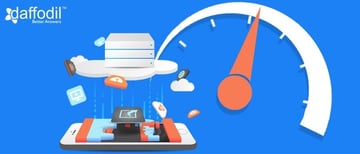
You’re a sailing ship, propelling from Colombia to Panama. The suns and stars, the winds and currents dictate your position. There is a trained crew that can handle unexpected events throughout the voyage. The flow of journey can’t be predicted at its outset but you can dynamically respond to the situations. You move with a strategy, a tactical ideology, no operational plan but still there is high success rate. That’s how Agile methodology for mobile app development works.
Agile is a flexible and synergetic way of managing the app development cycle. It’s a framework that empowers you to tweak your product development journey on the go. Below are a few traits of Agile development, explaining how its adoptability in the mobile app development arena can help you achieve anticipated output.
a. Real Time Planning Give More Power to the Product
Agile is a development framework, which understands that best solutions are the outcome of iterative learning. In most of the conventional development schemes, a lot of time, resources, and energy gets wasted in preparing a roadmap for project as things are acknowledged. Agile lay down a model for development that do away with the need of preparing a plan, which anyway is going to change with time and instead emphasize of tasks at hand.
b. Seamless Management with Short Development Sprints
Agile helps to divide the project into smaller sprints, which makes it easier to reach the final product via small shippable units. This gives an estimate of team’s accountability and fidelity towards completion of a project. As a consequence, it becomes easier to examine team’s velocity, allowing you to provide deadlines for mobile app development and delivery.
c. Easy Change management leads to Continuous Improvement
The smartphone industry is rapidly reforming and to respond to industry standards or user requirements, it is important to be ready for the change. One of the key benefits of Agile development is it understands the real asset of an app development cycle, i.e. change. Opting for agile friendly development means time to time changes, which will not disrupt the project and will turn out to be a positive experience for both, the team and the app’s outcome.
d. Error Fixing and Risk Management at Early Stage
Mobile app users are strictly unforgivable when it comes to glitches in the applications they are using. With small, iterative releases, you can ensure that minor or major errors in functionality and user experience are fixed on time, giving a refined version of app to the users. Also, because these errors are recognized at the early stage of mobile app development, it is easy to manage the risks, without letting it affect rest of the cycle.
e. Fast Feedback Means Client-Centric Development
Oft-times, a mobile app development happens as per designed blueprint, but then it does not come out with what the business stakeholders expect. Instead of confronting this fact after six months of project commencement, Agile helps you to escape such circumstances by providing a tangible solution to present in the initial sprints only. This way, you can get a feedback and continue to make improvements until an expected end-product is delivered.
How Well Does Agile Complements Mobile App Development?
Every mobile app is unique in a way. While they usually start up with a small idea, they can be scalable to large extent. In order to achieve what is expected, there could be revisions to the UI, features, and functionality. Agile development, unlike other rigid models offer flexibility for change. This ascertains opportunity to work upon user experience and satisfaction in varied development sprints.
Agile offers development model which is customer-centric and well suited for a collaborative contribution to a project. Because it can respond to project scalability effortlessly, they are preferred for small and large scale app development, giving a real time view of progress rate to the stakeholders. And when a framework brings level playing field for both the ends, it surely deserves adoptance for developing a mobile app.



